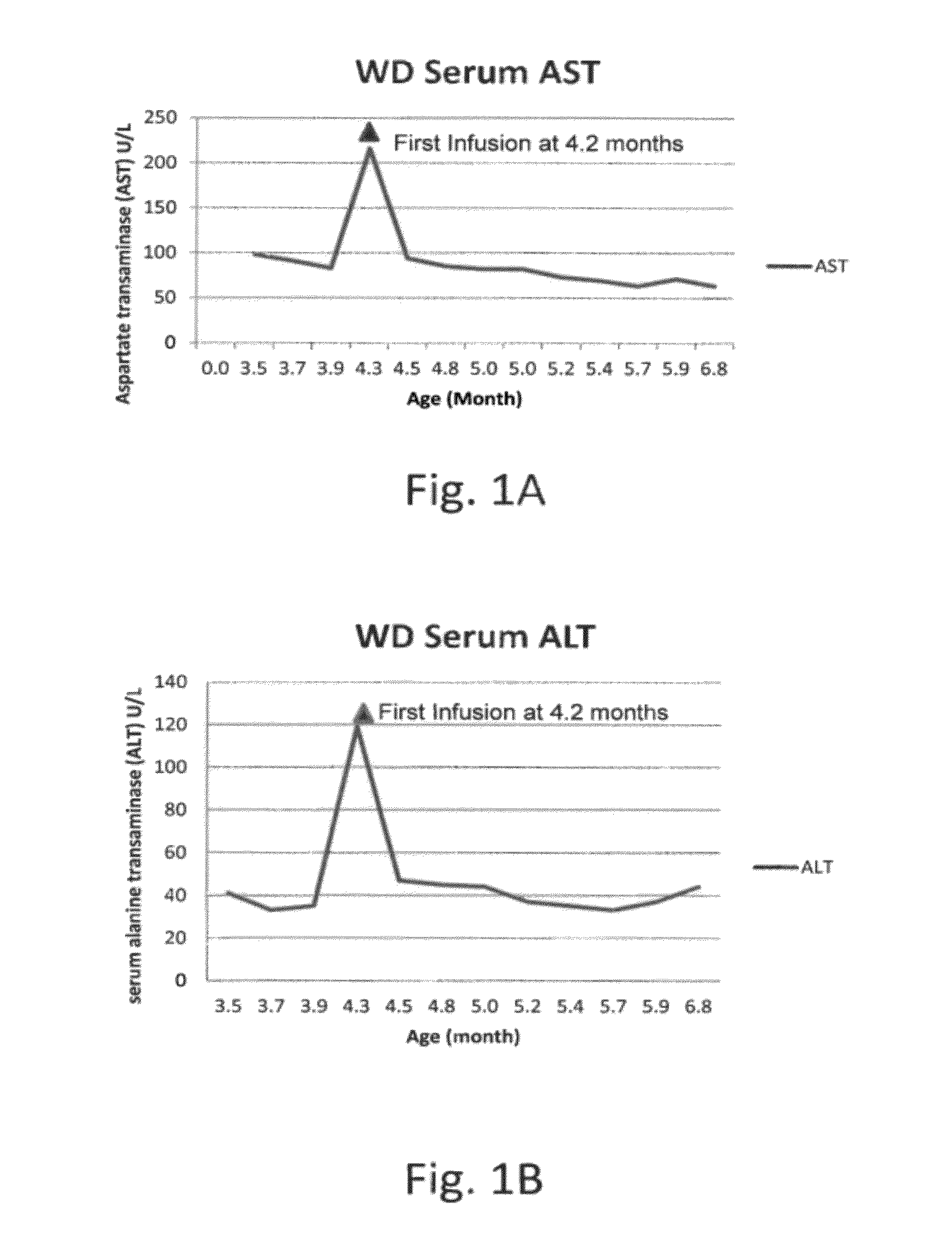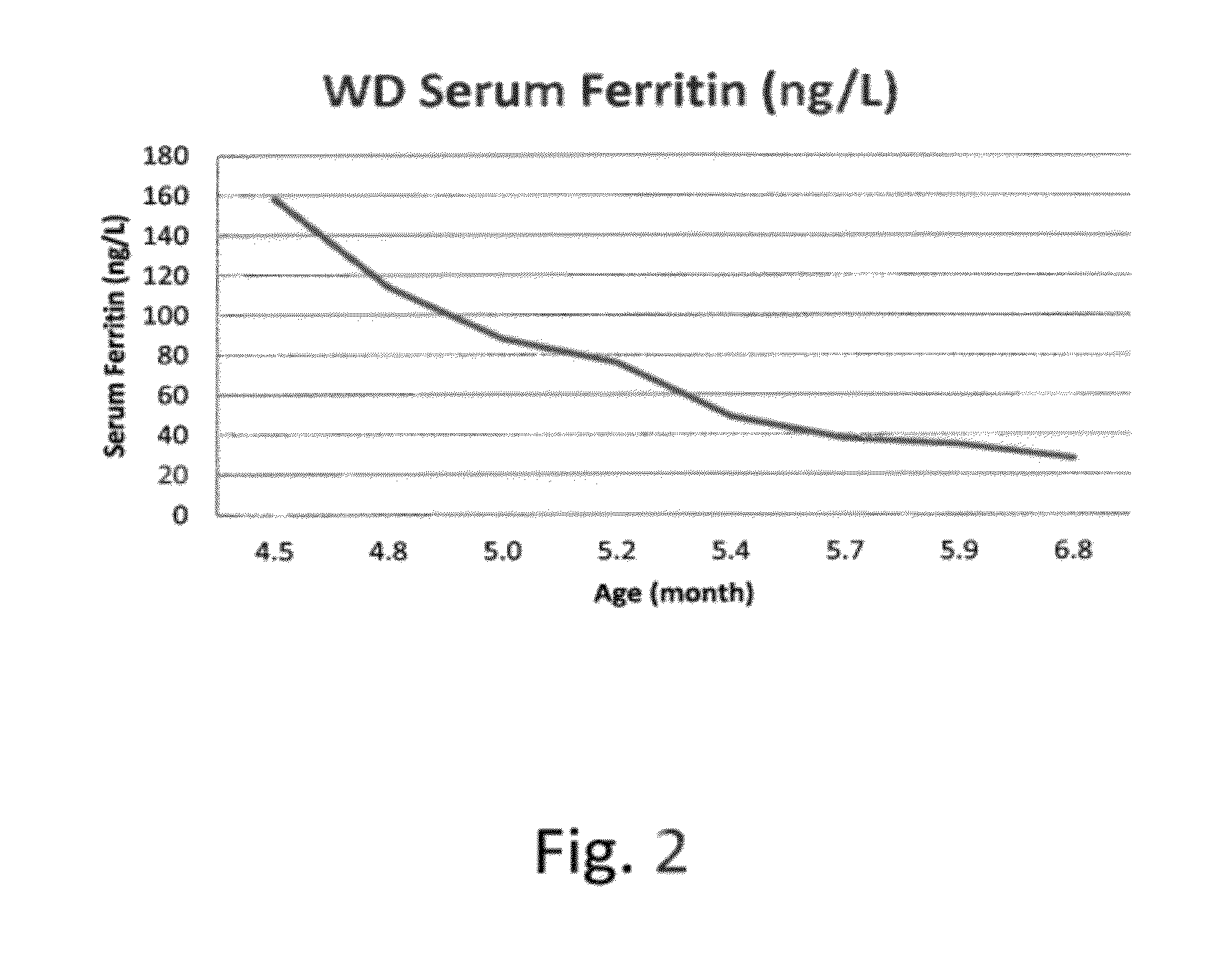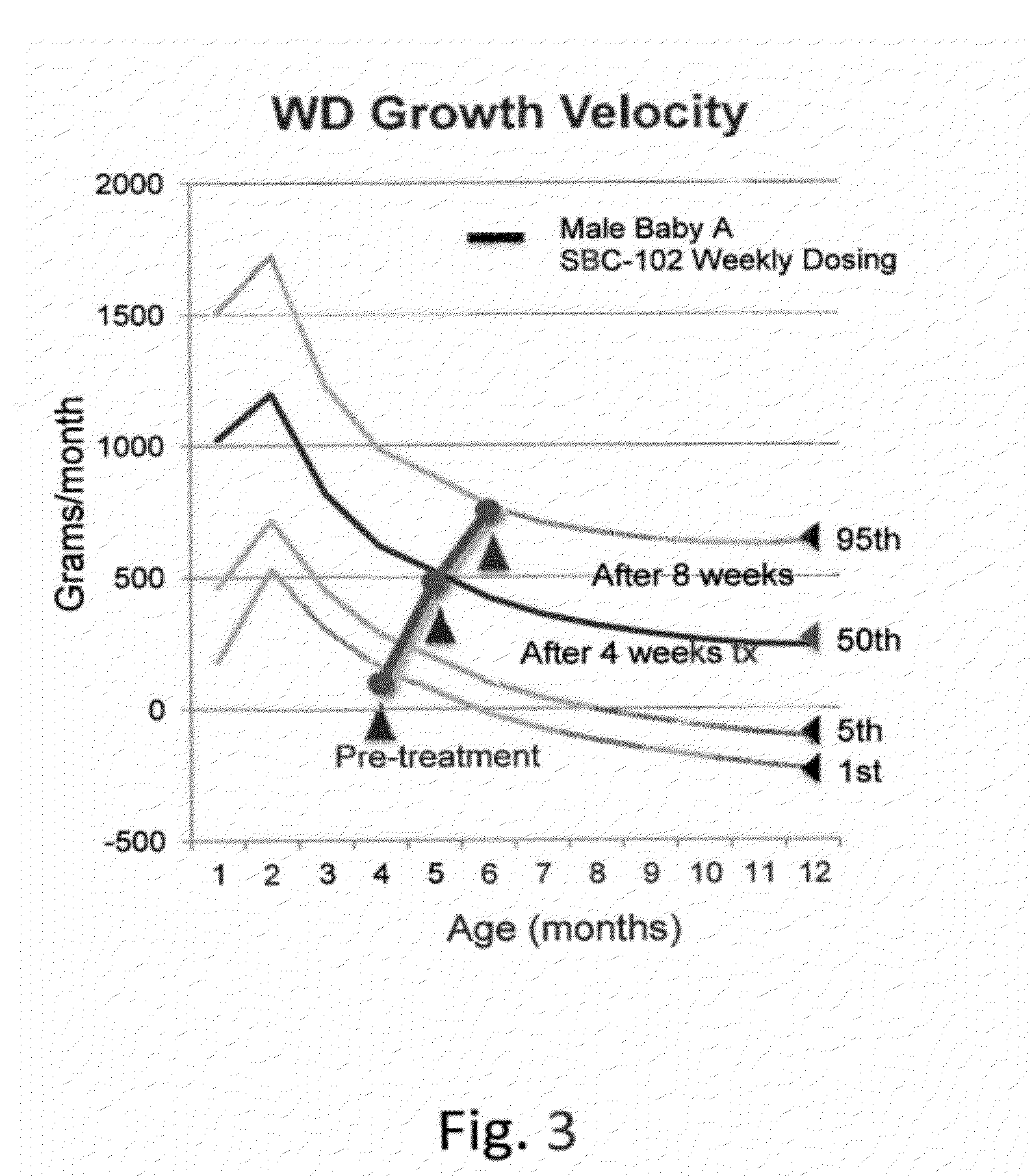Methods for treating lysosomal acid lipase deficiency in patients
a technology of lysosomal acid lipase and patients, which is applied in the direction of drug compositions, peptide/protein ingredients, metabolic disorders, etc., can solve the problems of significant morbidity and mortality, profound disturbance of cholesterol and lipid homeostatic mechanisms, and substantial increases in hepatic cholesterol synthesis. , to achieve the effect of increasing lal activity, increasing lal activity, and increasing lal activity
- Summary
- Abstract
- Description
- Claims
- Application Information
AI Technical Summary
Benefits of technology
Problems solved by technology
Method used
Image
Examples
example 1
Treatment of Early Onset LAL Deficiency (Wolman Disease) by Administration of Recombinant LAL
[0145]At 15 weeks of age, a male infant was admitted to the hospital because of poor weight gain since birth (birth weight, 3.88 kg). The infant presented with vomiting, feeding problems, poor nutritional status, diarrhea, increasing abdominal distension and anemia. The patient was diagnosed with Wolman Disease.
[0146]At the initial physical examination, the patient weighed 5.62 kg placing him below the 5th percentile of weight-for-age. Over the next 4 weeks from the initial examination at 15 weeks of age and prior to the initial infusion at 19 weeks of age, the patient failed to gain weight. The estimated growth velocity was calculated to be less than the 1st percentile for weight-for-age. The abdomen was markedly distended, with significant hepatomegaly and splenomegaly. Abdominal ultrasound and CT scan confirmed hepatosplenomegaly and bilateral symmetrically enlarged adrenal glands with ca...
example 2
Study Design for Early Onset LAL Deficiency
[0154]SBC-102, an rhLAL produced in transgenic Gallus, is administered by weekly IV infusion. The study is designed to evaluate the safety, tolerability and efficacy of two dose regimens of SBC-102 administered by weekly IV infusions. As such, the main outcome variables in this study determine safety and tolerability of SBC-102 in children with growth failure due to LAL Deficiency, and include: vital signs and physical examination findings; clinical laboratory tests; anti-drug antibodies tests; and use of concomitant medications. Considering that a growth failure is a universal clinical feature of LAL Deficiency / Wolman phenotype, a successful therapy for this disorder should be able to address the growth failure seen in children affected by LAL Deficiency. Parameters directly related to the child's growth and nutritional status are evaluated as secondary or exploratory objectives: e.g., incremental growth velocity for weight; weight gain; a...
example 3
Physical Assessments of Early Onset LAL Deficiency Patients
[0165]Patients who are clinically stable enough to tolerate general anesthesia should be considered for central line placement for long-term vascular access. In subjects receiving general anesthesia and / or sedation for other procedures, a baseline abdominal magnetic resonance imaging (MRI) scan is considered. In the event of new procedures requiring general anesthesia and / or sedation, a follow-up MRI is considered if it is no earlier than 3 months after the first infusion. Anthropometrics (weight, height, abdominal circumference, mid-upper arm circumference, and head circumference) are measured. A general physical examination is performed. A complete physical examination is conducted. The examination includes an assessment of the subject's general appearance, skin, head, eyes, ears, nose, and throat, heart, lungs, abdomen, extremities / joints, and neurological status. Every physical examination also includes the following:[01...
PUM
| Property | Measurement | Unit |
|---|---|---|
| time | aaaaa | aaaaa |
| time | aaaaa | aaaaa |
| time | aaaaa | aaaaa |
Abstract
Description
Claims
Application Information
 Login to View More
Login to View More - R&D
- Intellectual Property
- Life Sciences
- Materials
- Tech Scout
- Unparalleled Data Quality
- Higher Quality Content
- 60% Fewer Hallucinations
Browse by: Latest US Patents, China's latest patents, Technical Efficacy Thesaurus, Application Domain, Technology Topic, Popular Technical Reports.
© 2025 PatSnap. All rights reserved.Legal|Privacy policy|Modern Slavery Act Transparency Statement|Sitemap|About US| Contact US: help@patsnap.com



